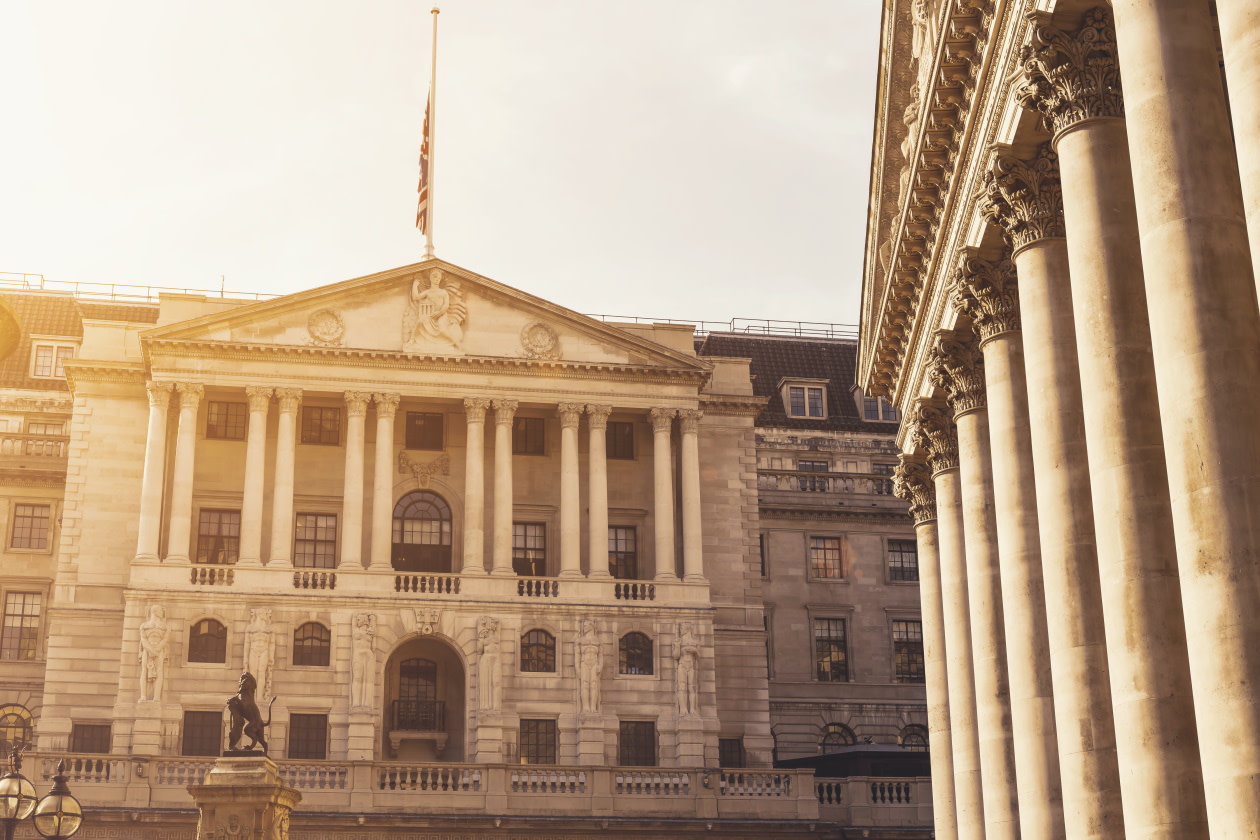‘Liberation Day’ feels like a long time ago now, but the impacts still dominate investors’ minds.
We’ve seen stock markets fall and then rebound following the 90-day delay announcement.
But what about bonds?
Did they act as a diversifier against share price falls as so many textbooks suggest?
Here’s a look at how bonds have performed recently and the potential implications for the future.
This article isn’t personal advice. If you’re not sure whether an investment is right for you, ask for financial advice. All investments and any income from them can fall as well as rise in value, so you could get back less than you invest. Yields are variable and not a reliable indicator of future income. Past performance also isn’t a guide to the future.
Tariffs – the short term
Firstly, the impact of tariffs on markets so far is very short term.
It’s important to remember that investing should be considered over the long term, not a few weeks or months.
That said, a good way to start assessing what’s happened recently from a bonds perspective is to ask this question – have bonds provided diversification to shares?
The answer? Yes.
Global stock markets fell 10.24%* in the three months to the end of April 2025. The IA Sterling Strategic Bond sector is up 1.19% over the same period.
While most of this time is before the Liberation Day announcements on 2 April, markets had already fallen ahead of the big day given the uncertainty about what was coming.
It's hard to bring the textbook explanation of investment diversification to life any better than that.
Tariffs – the long term
What about the longer-term impact of tariffs on bonds?
The answer here is much more challenging.
That’s because tariffs have conflicting implications for central bank interest rate policy.
Tariffs will almost certainly be inflationary over the short term.
But, since 2022, the fear of using the word ‘transitory’ when it comes to inflation is real. Higher inflation (even short term) could cause higher wage increases, which increase business costs, which push up prices.
The inflation spiral upwards could be reignited by tariffs.
Or it might be a one-off inflationary impact as businesses and consumers look through the increased costs of goods that tariffs provide.
And remember, in terms of global inflation, it’s very much dependent on retaliation from countries to the US policy that’s relevant here.
So, trying to predict the inflationary impact of tariffs is difficult. But one fact that’s known – inflation is bad for bonds.
In terms of central bank policy, higher inflation puts pressure on to increase interest rates to stop the inflation spiral continuing.
But tariffs also impact economic growth. Tariffs are largely expected to reduce consumer spending, which reduces economic growth.
This gives central banks a headache.
In a scenario where economic growth is falling, central banks want to cut interest rates, to encourage people to spend more and save less (and borrow more to invest).
When it comes to the price of bonds, increases to interest rates are bad, while decreases are good.
What’s the latest on interest rates?
The US Federal Reserve didn’t change rates at its most recent meeting on 7 May, but the Bank of England cut by 0.25% on 8 May.
The European Central Bank cut rates by 0.25% in April, its seventh cut since June 2024.
Looking ahead, markets continue to expect interest rate cuts both in the UK and US in 2025.
While this could help bonds, it’s likely bond prices already reflect these cuts. This means, even if there are cuts, future bond price increases could be limited.
For example, the recent decision by the Bank of England was much more heavily debated than investors were expecting, with some members arguing not to cut and others suggesting a 0.50% cut.
This means there’s greater uncertainty about what they’ll do next, and gilt (UK government bond) yields rose on the day of the cut announcement.
Remember, yields move in the opposite direction to prices, meaning prices fell.
They fell because markets already expected a further cut in June, which now looks less likely.
The outlook for bonds therefore remains uncertain. But as we’ve seen more recently, they have potential to provide further diversification to stock markets.
For example, gilts maturing around two years from now continue to offer annualised returns of around 4% if bought and held until maturity.
How have bonds performed over the last 12 months?
Performance has varied across different parts of the bond market over the last year, particularly since the start of October.
More risky bonds within the high yield category have provided the highest returns, while UK government bonds have provided the lowest. This is largely because of the yields those bonds offer.
Companies with a higher risk of defaulting on their bond payments have to offer higher returns to investors to take that risk, especially compared to the UK government.
While returns varied within the different sectors, bonds more broadly provided positive returns over the last 12 months.
Annual IA sector percentage growth
Apr 20 – Apr 21 | Apr 21 – Apr 22 | Apr 22 – Apr 23 | Apr 23 – Apr 24 | Apr 24 – Apr 25 | |
|---|---|---|---|---|---|
IA £ Corporate Bond | 4.93% | -7.37% | -6.89% | 5.41% | 6.02% |
IA £ High Yield | 18.68% | -4.18% | -1.34% | 9.52% | 8.01% |
IA £ Strategic Bond | 9.46% | -5.11% | -3.80% | 5.54% | 7.23% |
IA UK Gilts | -7.99% | -7.71% | -16.09% | -1.11% | 3.41% |
The table above highlights how different the returns can be from different parts of the bond market.
The IA £ Strategic Bond sector returns have been fairly consistently in the middle of the range over time, as you’d expect given funds in that sector can invest in all types of bonds.
This highlights the potential benefits of investing in those funds. While the overall returns might not have been the highest available, the journey hasn’t been as bumpy.
Receive expert fund insights direct to your inbox every week, including research, investment articles and in-depth sector reviews.
How have our fixed income Wealth Shortlist funds performed?
Our Wealth Shortlist bond funds have delivered mixed performance over the past year. Some have outperformed their peer group, while others have underperformed.
We wouldn’t expect them all to perform the same though. If all your funds in a sector are performing well at the same time, they're probably investing in similar areas.
Investing in funds isn't right for everyone. Investors should only invest if the fund's objectives are aligned with their own, and there's a specific need for the type of investment being made. Investors should understand the specific risks of a fund before they invest, and make sure any new investment forms part of a long-term diversified portfolio.
For more details on each fund and its risks including charges, see the links to their factsheets and key investor information below.
Artemis High Income
The best-performing Wealth Shortlist fixed income fund over the past year was Artemis High Income with a return of 9.25%*.
The fund focuses on paying a high income to investors, mainly by investing in bonds. But it can also invest up to a fifth of its assets in UK and European shares.
A focus on high-yield bonds and investments in shares that pay a dividend makes it a little different from most bond funds, though it does make it a higher-risk option.
High-yield bonds have been the best-performing area of bond markets over the 12-month period, which helped the fund perform better than the wider peer group.
The fund tends to only invest a small amount in government bonds. This helped performance as government bonds didn’t perform as well as corporate bonds.
The fund takes charges from capital, which can increase the potential income paid, but reduce the amount of capital growth.
Annual percentage growth
Apr 20 – Apr 21 | Apr 21 – Apr 22 | Apr 22 – Apr 23 | Apr 23 – Apr 24 | Apr 24 – Apr 25 | |
|---|---|---|---|---|---|
Artemis High Income | 17.40% | -3.74% | -0.65% | 9.73% | 9.25% |
IA £ Strategic Bond | 9.46% | -5.11% | -3.80% | 5.54% | 7.23% |
Legal & General All Stocks Gilt Index
The worst-performing Wealth Shortlist fixed income fund over the last 12 months was the Legal & General All Stocks Gilt Index fund, returning 3.29% over the period**.
The fund offers a simple way to invest in UK government bonds across all maturities. It can help diversify a portfolio focused on shares or other types of investment.
The fund takes charges from capital, which can increase the income paid but reduce capital growth. As the fund only invests in UK gilts, it is concentrated at an asset class level. But there also aren’t many gilts so it’s concentrated, and each investment can have a large impact on performance.
Annual percentage growth
Apr 20 – Apr 21 | Apr 21 – Apr 22 | Apr 22 – Apr 23 | Apr 23 – Apr 24 | Apr 24 – Apr 25 | |
|---|---|---|---|---|---|
Legal & General All Stocks Gilt Index | -7.48% | -7.71% | -15.45% | -0.96% | 3.29% |
IA UK Gilts | -7.99% | -7.71% | -16.09% | -1.11% | 3.41% |
Open a new HL Stocks and Shares ISA or SIPP today and enjoy 40% off your account charge
Open your ISA or SIPP and add at least £10,000 (including cash and/or transfers) by 30 June 2025
The 40% discount applies between 1 July and 31 December 2025
If you're transferring, your reduced charge will start once your transfer completes, and continue until 31 December 2025
Need more time to apply to transfer? Contact our Helpdesk.
Important: This offer reduces the HL account charge. Our standard account charge is no more than 0.45% a year. Other investment charges may still apply. Buying and selling funds is free. Share and ETF dealing charges apply. See the full ISA offer terms and SIPP offer terms.




